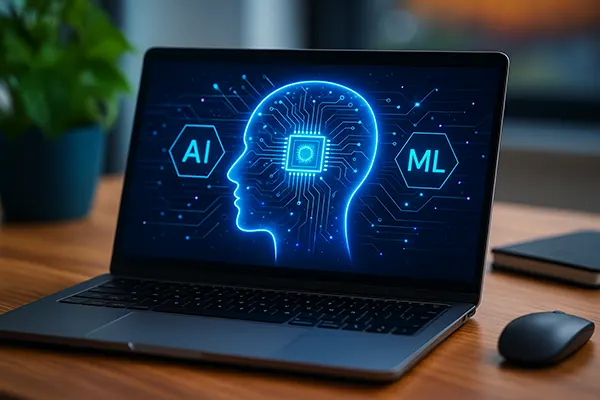
PC Software in the Age of Artificial Intelligence: Autonomy, Adaptability and Ethics
The rapid evolution of artificial intelligence has reshaped expectations for modern PC software. Applications that once relied on fixed logic now incorporate adaptive models, real-time analysis and automated decision-making. By 2025, the focus has shifted from simply accelerating workflows to ensuring that intelligent systems remain transparent, reliable and aligned with human values.
Growing Autonomy in Everyday PC Software
One of the most notable trends is the rise of autonomous capabilities in widely used applications. Desktop tools now integrate predictive algorithms that handle data classification, threat detection and personal workflow optimisation without requiring constant user input. This shift has reduced repetitive tasks and improved operational continuity across various industries.
Another important development is the integration of on-device AI processing. Instead of sending large volumes of data to external servers, many modern applications analyse information locally using optimised AI engines. This approach significantly improves privacy protection, reduces latency and provides more dependable offline performance.
However, rising autonomy also increases the need for clear safeguards. As software independently performs tasks such as auto-configuration, anomaly reporting or content recognition, users must maintain control over system behaviour. Developers now implement transparent logs, adjustable permission structures and clear indications of when automated features are active.
The Role of User Control in Intelligent Systems
While autonomy brings efficiency, it must be balanced with user authority. Modern PC programs include detailed settings that allow individuals to limit data collection, disable behavioural analytics or customise the scope of automated actions. This ensures that people remain the final decision-makers within AI-assisted workflows.
Developers increasingly rely on human-centred interface design. Software built for 2025 uses straightforward terminology, guided prompts and accessible dashboards that explain how AI components operate. These improvements help users understand the reasoning behind automated recommendations and avoid misunderstandings.
To support accountability, many applications embed mechanisms for manual overrides. When an AI system misinterprets data or performs an undesirable action, users can easily intervene, adjust the model’s parameters or reset AI-generated configurations. This combination of autonomy and oversight maintains both efficiency and safety.
Adaptive Capabilities and Real-Time Personalisation
PC software has become increasingly responsive to context and behaviour. Adaptive systems learn from user habits, device performance and environmental conditions to create personalised experiences. Such adaptability improves productivity by tailoring interfaces, shortcuts or resource allocation to each individual’s working patterns.
AI-driven diagnostics now play a major role in system maintenance. Applications benchmark hardware, monitor system health and proactively suggest optimisation steps based on real-time analysis. Instead of relying on scheduled maintenance, PCs adjust their performance strategies dynamically.
In creative and professional work, adaptive tools elevate both speed and quality. Editors automatically correct writing inconsistencies, design programs adjust layouts based on aesthetic rules and analytical suites highlight patterns in large datasets. These capabilities help users focus on complex decisions rather than routine operations.
Challenges of Model Accuracy and Context Awareness
Adaptive systems can provide meaningful assistance only when they interpret context correctly. Incorrect assumptions may lead to unhelpful recommendations or inappropriate automation. To minimise these risks, developers refine training datasets, incorporate diverse usage scenarios and apply robust validation processes.
Ensuring model accuracy also requires continuous feedback. Many PC applications include mechanisms allowing users to rate suggestions or clarify incorrect predictions. This feedback loops back into the model and strengthens its contextual understanding over time.
Another challenge is preventing over-personalisation. When systems adjust too aggressively, they may narrow the range of available options or misinterpret temporary behaviour as long-term preference. Balanced adaptation strategies prevent such distortions and maintain a flexible user experience.

Ethical Standards in AI-Driven PC Software
As AI becomes embedded in everyday PC tools, ethical standards have become a core priority. Regulations across Europe and other regions now require developers to implement transparent data policies, risk assessments and responsible design principles. These measures aim to ensure fairness, inclusivity and respect for user autonomy.
Bias prevention is a major concern. Intelligent systems that rely on unbalanced datasets can produce inaccurate results or reinforce unintended inequalities. Software vendors now invest in dataset auditing, bias-resistant modelling techniques and external evaluations to maintain neutrality and reliability.
Security remains equally important. AI components can introduce new vulnerabilities if training data is manipulated or inference processes are attacked. Developers implement encrypted model storage, secure update channels and regular integrity checks to maintain user safety and preserve trust.
Transparency and Responsible AI Deployment
Modern software must clearly communicate how AI processes data and why certain decisions are made. Transparent reporting helps users understand the purpose of automated actions and assess the reliability of system recommendations. This openness strengthens confidence in intelligent tools.
Responsible deployment also involves limiting the scope of AI where necessary. Not all tasks benefit from automation, especially when they require nuanced judgement or carry significant consequences. Developers focus on hybrid approaches that combine human expertise with machine efficiency.
Clear documentation and ethical design frameworks guide the development of new PC software in 2025. By emphasising accountability and user welfare, developers create solutions that deliver meaningful value while maintaining strong ethical standards.


